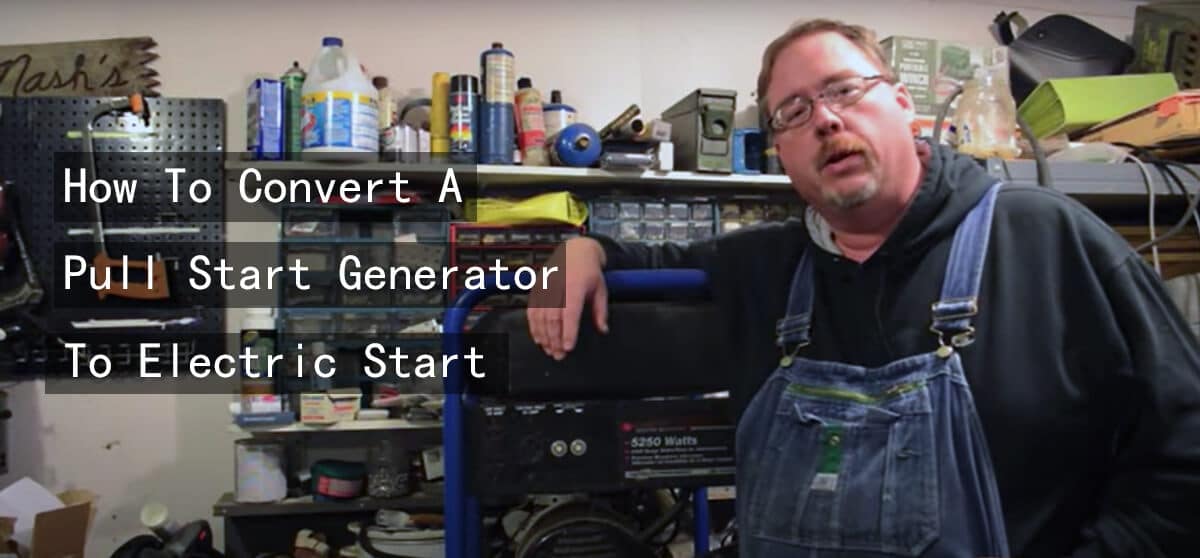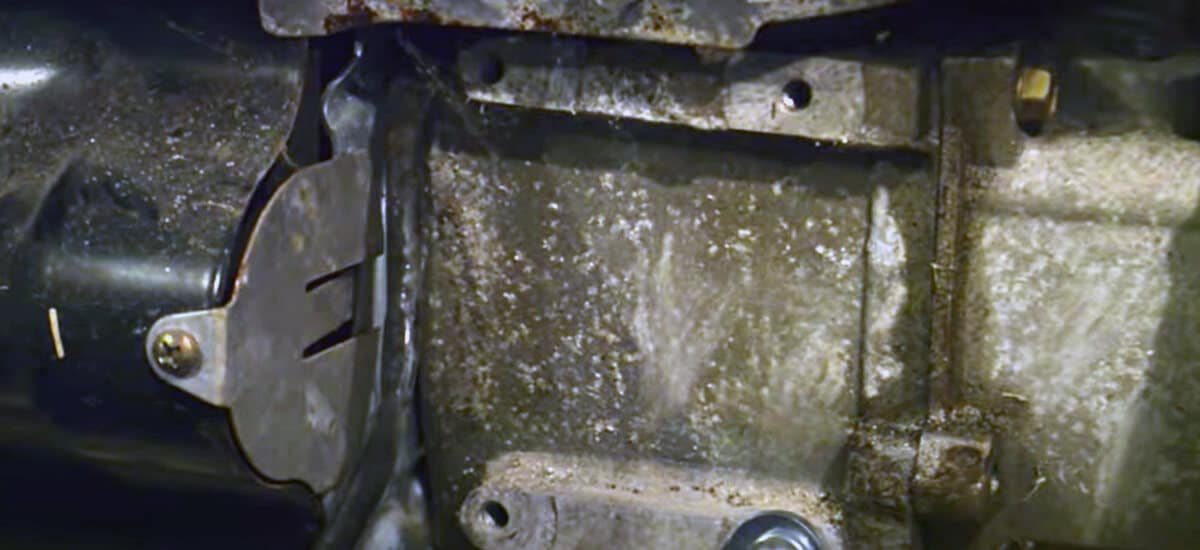how to convert a pull start generator to electric start
- BY BISON
Table of Contents
traditional pull-start generators, while generally cost-effective and simple in design, can present some challenges. The start-up process can be physically demanding and can be difficult in adverse weather conditions. Time and again, pull-start generators have proven to be impractical, especially in emergencies where immediate power is required.
In this article, BISON will provide detailed guidance on the conversion process by delving into the key factors to consider when considering making the switch. So if you, like most of us, are still using a hand-pull starter and are frustrated with it, it may be time to replace your hand-pull starter with an electric starter. You can convert pull start to electric start by following this guide.

Pull-cord generators and electric starter generators
Broadly speaking, generators can be split into two categories based on their starting mechanism: pull start and electric start. Pull start generators, also known as recoil start generators, require a bit of physical effort to get them running. On the other hand, electric start generators incorporate a simple, user-friendly switch or button startup system, which operates on battery power.
Electric starter generators offer many advantages. The main advantage is that the starting process is effortless. The generator can be started at the push of a button without the effort required by pull-start systems. Therefore, switching from pull-start to electric start is not only easier to operate and takes less time to start, but also reduces wear and tear on the generator mechanism.
can you change a pull-start to an electric-start?
Before embarking on the journey of converting a pull start generator to an electric start, you must take into account several factors. These considerations will not only determine the success of your venture, but they also ensure the overall convenience and cost-efficiency of the process.
engine brand and model compatibility
The first step needs to be to determine the compatibility of the existing electric starter kit. Not all generators can be retrofitted and the engine will need to have an existing mounting plate or location to which the starter motor can be secured. Therefore, you must confirm that the engine of your pull starter generator allows for such a retrofit.
Next, you need to find an electric start kit compatible with your generator model. The kit typically includes an electric starter motor, start button, and wiring harness. Some kits also come with a new flywheel, whereas others only provide an additional ring gear that can be mounted onto the existing flywheel. Ensure to choose an electric start kit specifically designed for your generator to avoid compatibility issues.
cost-effectiveness
Lastly, weigh out the cost-effectiveness of the conversion process. Compare the cost of the conversion kit, battery, and any additional tools you may need with the price of a new electric start generator. Depending on the brand and model of your generator, it might be more cost-effective to simply buy a new electric start generator.
warranty
An additional factor to consider is the Warranty. Modifying your generator with a conversion kit might void the warranty provided by manufacturers, potentially leaving you without coverage for any mishaps that occur during the conversion process or shortly thereafter. Always contact your generator’s customer service or check the warranty terms before you proceed.
Converting a pull-start generator to an electric one
You’ve decided to go from a pull-start to an electric starting for your generator. Pull-start generators can be very taxing on your arms, and the time you lose attempting to run one might make you want to convert to an electric start generator. This is a wise decision on your part and will make your life much easier.
Before we begin the conversion process, we need to make sure of a few things. We need to be 100% sure that your generator can indeed be replaced. Let’s follow these steps:
### step 1 read through your owner’s manual

BISON generators are designed to facilitate a smooth transition from pull starting to electric starting. Before you start rebuilding your portable generator, read your generator manual carefully. The manual usually includes a section detailing engine conversions, giving you important information to help you purchase an electric starter kit for your size and brand.
### step 2 inspect your engine
Check your generator engine for the proper mounting plate for the electric starter. If your generator already has the appropriate mounting plate or holes for the electric starter, the starter can be installed directly. However, if no such provision exists, modifications may be required to allow room for the electric starter kit.
### step 3 inspect your flywheel
Inspect your flywheel to make sure it has the required ring gear.
Now, you’re ready to start making changes!
### step 4 purchase the right starter kit
Consider a few factors while selecting an electric starter kit for your generator. To ensure optimal performance and a more straightforward installation process, it is advisable to search for a kit made by the same company as your generator.
It’s much better to get it right the first time than to continually have to repair it because things break all the time, so please do your homework and don’t be afraid to spend a little more to purchase a high-quality kit.
Once you’ve got your starter kit, make sure it has all the components you’ll need to convert the generator from pull to electric:
- Starter motor
- Push-button or key-operated ignition
- Bolt
- Plug
Before starting the conversion, check your starter kit checklist to ensure all the components listed above are in the kit. When done, follow these simple steps:
### step 5 disassemble existing pull start syst
Taking apart your generator’s existing pull start system requires caution to avoid damaging any integral parts. Locate the recoil starter cover, which includes the pull cord and housing. Usually, this can be removed by loosening a few bolts or screws. Keep all parts and fasteners safely aside as you might need them in case of converting back to pull start. Be careful with the recoil spring, as it’s under tension and could cause injury if released abruptly.
### step 6 prepare for electric starter installati
Once the pull start mechanism is removed, you can introduce the heart of your upgrade – the electric starter motor.
The first task here is to mount the starter motor onto the engine, typically onto the existing mounting plate or spot. Once the starter motor is securely attached to the engine, the starter gear can be connected to the flywheel. Depending on the engine and the kit purchased, this may require replacing the flywheel or adding a ring gear to the existing flywheel.

### step 7 wiring and electrical set
With the motor physically installed, the next step is the electrical setup. This includes the installation of the battery and battery box, if not already included in your generator. You must secure the battery properly to prevent any possibility of movement or vibration during generator operation.
Next, connect the starter motor’s wiring harness according to the instructions that come with the kit, ensuring that all connections are firm and well-insulated, to avoid potential electrical shorts or shocks. Once the wiring is complete, it’s good practice to test the starter circuit at this stage, before wrapping up and reassembling any other parts.
This beginner stage testing ensures that the starter motor operates as it should, spinning the engine over.
### step 8 final touches and testing
After ensuring the successful operation of the electric starter, reassemble any remaining components of your generator, such as the generator housing. Now, you’re ready to conduct the final test – a live trial.
Push the electric starter button and listen for the sweet sound of a smoothly starting generator. Pay close attention to any unusual sounds or performance issues. If you encounter any difficulties, refer to the troubleshooting section of the kit’s manual, or consult a professional.
factors that might prevent you from converting pull start to electric start
We’ve talked about converting from pull start to electric start when conditions are right to make the conversion. However, there are instances where you may need to make some modifications before beginning the transformation. Let’s explore these examples:
After checking your engine to locate a mounting plate, if there isn’t one, drill a mounting plate; you should look for one that is already drilled. You’re in trouble if there’s no mounting plate or mounting boss. This means you won’t be able to change. Retrofitting is an option; however, this can be very difficult to achieve and time-consuming, making it not worth the effort.
When there is no ring gear in the flywheel, when removing the flywheel cover and you find that there is no ring gear, do not apply pressure. Your current flywheel needs to be changed out with one with a ring gear. The conversion will only work with the presence of this section.
Conclusion
The manual method of starting your generator is by pulling the start. It puts stress on your arms and rarely begins after just one stretch. We all pulled and pulled for what seemed like forever before our generators decided to kick on. It can be frustrating.
Transitioning from a pull start to an electric start generator offers a world of convenience. It brings forth the benefit of a quick, effortless, and reliable start-up mechanism, devoid of the physical strain associated with recoil systems. Especially in emergencies or adverse weather conditions, possessing an electric start generator becomes a life-saver, guaranteeing a steady power supply at the mere push of a button.
As we conclude, we hope that this comprehensive guide succeeds in shedding light on the process of converting a pull start generator into an electric start one. Welcome to a world where power is just a push-button away!
pull start generator to electric start FAQ
are electric start generators more reliable?
An electric start is often considered more reliable than a pull cord start, especially in cold weather. However, in modern generators, cord start has become quite reliable in any climate. Electric start can also fail if its battery is not charged. However, it is rare.
what causes a starter generator to fail?
A bad battery is one of the most common reasons for a generator not starting. This is frequently the result of a loose connection or sulphation accumulation; this is the buildup of crystals of lead sulfate on the lead-acid battery plates.
contact us
Please complete our contact form and we will soon get back to you with expert advice.
business
Get in touch to speak with our experts!
